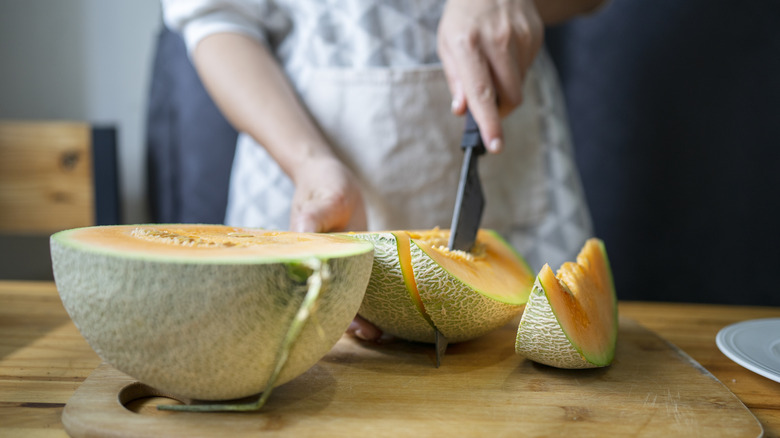
If you’ve ever stayed at a hotel, you’re likely familiar with the classic continental breakfast spread. It’s a convenient way to fuel up before a day of meetings or sightseeing, often featuring coffee, tea, yogurt, pastries, and perhaps some cold cereals for a quick grab-and-go option. To include some daily fiber, you might reach for the readily available slices of fruit.
While cantaloupe can be a refreshing choice in the summer, pre-cut cantaloupe may not be the safest option at a buffet. Although you can take precautions at home to prepare cantaloupe safely, once it’s cut and left out — like on a buffet table — it becomes more susceptible to contamination by harmful bacteria such as listeria or salmonella. These bacteria thrive at room temperature, making buffet setups a potential risk for food poisoning.
Remember the salmonella outbreak in November 2023 that affected 44 states and sickened over 400 individuals? The Centers for Disease Control and Prevention reported that 158 individuals were hospitalized and six died. An investigation by the Food and Drug Administration traced the outbreak back to cantaloupe.
Why cantaloupe is more susceptible to bacteria

Buffets can be prime locations for bacteria and viruses due to challenges in maintaining safe food temperatures. According to the USDA, hot foods should remain above 140 degrees Fahrenheit, while cold foods should stay below 40 degrees Fahrenheit. Foods should not be left at room temperature for more than two hours.
Cantaloupe presents a unique challenge in bacterial control. The ridges on its skin can trap bacteria from the time it’s growing to when it’s prepared for the buffet. Although you don’t consume the skin, the bacteria can contaminate the knife and spread to the fruit’s edible flesh. If cantaloupe is left at room temperature, its high water content, neutral pH, and sugar make it particularly vulnerable to bacteria like salmonella. A 2025 article in the Journal of Food Protection reviewed melon-associated salmonella outbreaks worldwide over the past 30 years and found cantaloupes responsible for 43% of outbreaks and 73% of deaths. Pre-cut cantaloupe in public settings, like buffets, played a role in some of the larger outbreaks.
How to eat cantaloupe safely

Cantaloupe is rich in vitamin C and beta carotene, and its 90% water content helps keep you hydrated. Food safety experts at Northeastern University recommend avoiding pre-cut cantaloupe because you can’t be sure how long it has been cut. Bacteria can quickly grow as the cut cantaloupe is packaged and stored in the produce section.
When selecting cantaloupe at the store, ensure there are no cuts on the rind, as bacteria can enter through these and contaminate the fruit’s flesh. Although it’s challenging to completely sanitize the outside, State Food Safety recommends scrubbing it with antibacterial soap. Be sure to wash your hands, utensils, and surfaces before and after cutting into the cantaloupe. The Government of Canada advises storing cut cantaloupe in the refrigerator for up to four days, discarding it if it sits out for more than two hours. If serving fresh-cut melon outdoors on a warm day, you may need to dispose of it even sooner.
“`




